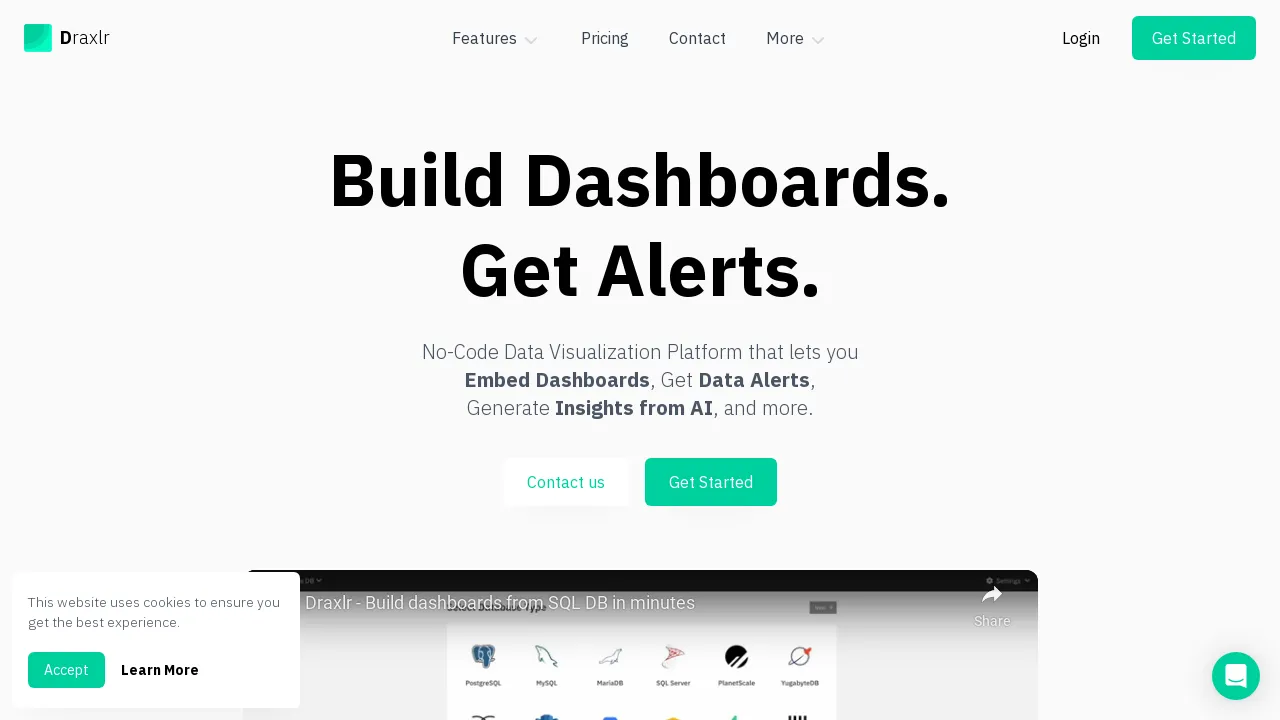Draxlr AI

Draxlr AI Overview
Draxlr is a no-code data visualization platform that enables users to build dashboards, receive data alerts, and generate insights using AI. It is compatible with your favorite SQL databases. The platform is designed to solve common problems such as the need for developer-generated reports, SaaS customer demands for analytics, and missing critical business events. Users can connect with their databases and services, filter, sort, and summarize data, build and share dashboards, and set up alerts.
Draxlr AI Highlights
- Draxlr's Query Builder and AI allow users to get answers from their SQL data without the need for developers.
- It offers the ability to embed beautiful dashboards with customer context in your SaaS Application, keeping your customers engaged.
- Draxlr provides alerts for critical business events, notifying users via Email or Slack when data changes, crosses a threshold, or in a scheduled manner, enabling better business decisions.
Use Cases
A retail business uses Draxlr AI to connect with their SQL databases and monitor their sales and inventory data in real-time. They set up dashboards to visualize their data and set up alerts for critical events such as low inventory levels or high sales volumes.
The business is able to make timely decisions based on real-time data, preventing stock-outs and maximizing sales opportunities. They also save time and resources by not needing developers to generate these reports.
A SaaS company uses Draxlr AI to embed dashboards with customer context in their application. This allows their customers to visualize their usage data and gain insights into their behavior.
The SaaS company is able to provide added value to their customers, improving customer engagement and retention. The customers are able to make data-driven decisions to optimize their usage of the SaaS application.
A financial services company uses Draxlr AI to set up alerts for critical business events such as significant changes in market data or crossing of risk thresholds. The alerts are sent via Email or Slack, allowing the company to respond quickly to these events.
The company is able to manage risks and seize opportunities more effectively by being alerted to critical events in a timely manner. This also reduces the need for constant manual monitoring of the data.